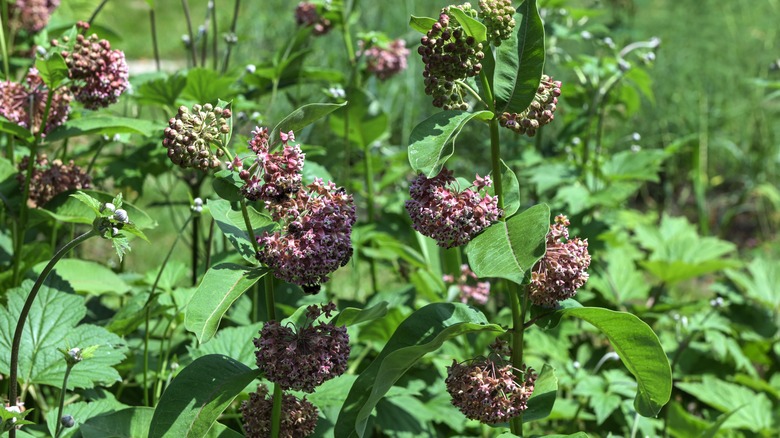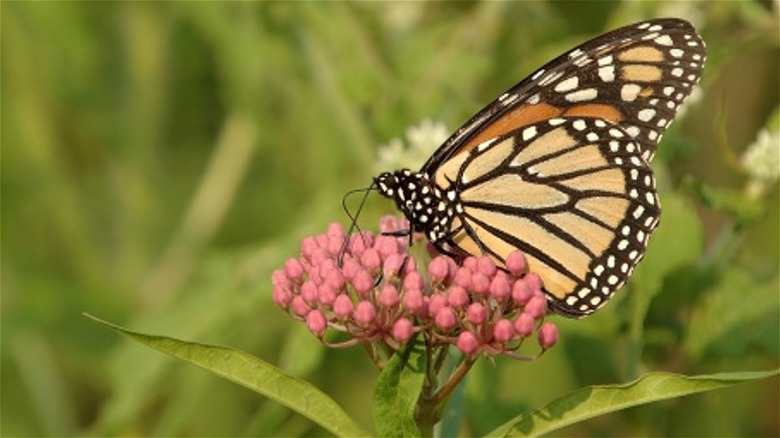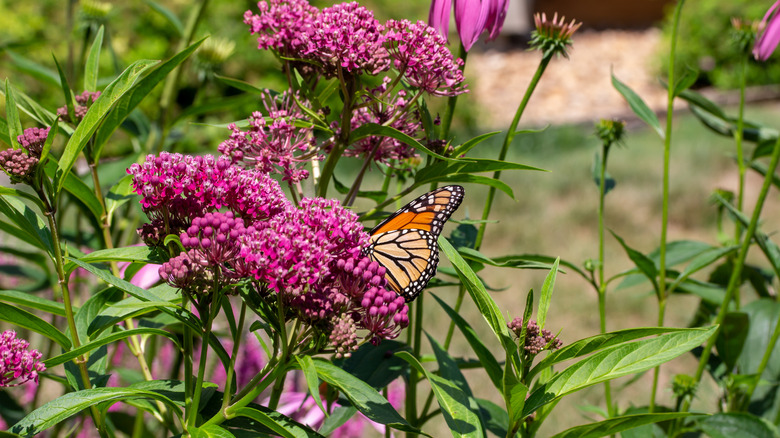Our Experts' Top Tips For Planting Milkweed And Other Butterfly-Friendly Flowers Together
The milkweed species of plants are a favorite among gardeners due to their colorful flowers that attract stunning butterflies. The winged creatures are drawn to milkweed because they are a primary source of food. In fact, the plant is the only food source for some of these butterflies' larvae. Milkweed plants are a great option for those who enjoy butterfly-watching, and they can even help you support vulnerable monarch butterfly populations. For those who are interested in sowing milkweed seeds for a beautiful butterfly garden, you might be happy to hear that butterflies will help with pollination as well. With all of these benefits, it might be a good idea to plant milkweed alongside your other butterfly-friendly flowers. Luckily, our plant experts have a few tips to help you pull this off successfully.
Tiffany Selvey, House Digest's master gardener, shared her experience growing milkweed and forget-me-nots together. Peg Aloi, House Digest's professional gardener, provided insight into the growing conditions that the different types of butterfly-friendly flowers require. Finally, Stephanie Bartlett, House Digest's horticulturist, shared details on her experience growing milkweed in moist soil. Let's dive into this expert insight.
Planting milkweed with other butterfly-friendly flowers
Planting multiple butterfly-friendly flower species will increase the likelihood of butterflies flocking to your yard. Tiffany Selvey has experience successfully growing different types of butterfly-friendly flowers in the same space. "I grow both milkweed and forget-me-nots in heavy clay soil in Arkansas. It's never been a problem," the master gardener explained. She also shared that both forget-me-nots and milkweed thrive in moist soil, so they are a perfect pair.
There are quite a few other plants that are a good fit to be planted alongside milkweed in your garden. Weigela shrubs bloom in spring and fade when milkweed blooms. This means that you can enjoy the beauty of either flower depending on the season. Goldenrod is a fabulous pair with milkweed and is easy to care for once established. If you plant your milkweed in containers, you might want to consider placing blanket flowers alongside them. They can thrive together as long as your soil is able to drain well.
Tips for planting milkweed
To add milkweed to your garden, you should start by planting them in spring about four to eight weeks before the last frost. You should start the seeds indoors before you transplant them into the soil outside. If you prefer to plant the seeds directly in your garden, you will need to sow the seeds in the fall or at the beginning of the spring season. Place your milkweed in a sunny area and be sure to include ¼ inch of additional soil on top of the seeds.
Keep in mind that swamp milkweed and butterfly weed thrive in two different types of environments. Swamp milkweed requires moist soil, whereas butterfly weed thrives in dry environments. However, you may still be able to plant both of them on your property if your yard has the appropriate growing conditions for each. "Other than these plants liking different growing conditions (sun and dry soil vs. shade and damp soil), I don't think there's any reason not to plant them near each other," Peg Aloi explained.
Stephanie Bartlett shared that she has experience with another moisture-loving milkweed species known as rose milkweed. "We actually grow it around a pond at my community garden! Although honestly, I think a lot of milkweeds are quite tolerant [of moist conditions]."


